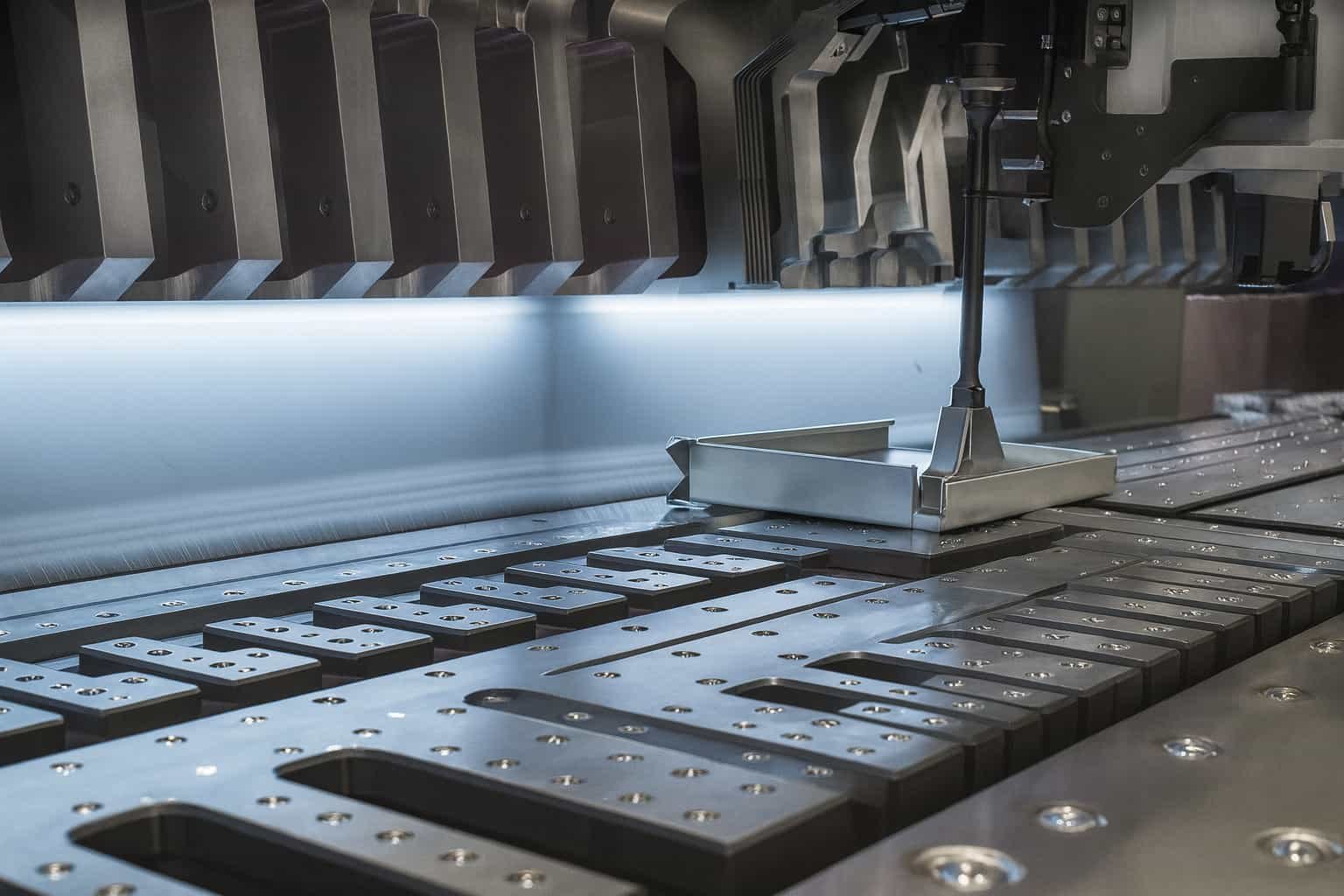You might ask, what is stamping? Stamping is a process where you use a machine to press shapes into flat metal sheets. Most people think of metal stamping or sheet metal stamping when they hear this term. Stamping helps create parts for cars, electronics, and airplanes.
This process supports a huge global industry. In 2023, the metal stamping market reached $236.83 billion. Experts expect it to keep growing, as shown below:

Key Takeaways
Stamping is a quick and exact way to shape metal sheets. It makes parts for cars, electronics, and airplanes. The stamping process has steps like designing, cutting, forming, and finishing metal parts. These steps use high precision and make little waste. There are different stamping types like progressive, deep draw, and fourslide. These types work for many part shapes and production needs. Using the right materials and machines makes strong and steady parts. This also saves time and money. Stamping helps many industries by making lots of detailed parts fast and at a low cost.
What is Stamping?
Stamping is a manufacturing process used to shape or cut materials, particularly metal, into desired forms using a stamping press. This technique is essential in creating components for various industries, including automotive, electronics, and appliances.
Definition
When you ask about stamping, you are learning about a big part of making things. Stamping shapes flat metal sheets by pressing them with a tool and die. You put the metal, as a blank or from a coil, into a stamping press. The press pushes hard to form the metal into the shape you want. This method works for many materials, but it is mostly used for metal. Stamping includes steps like punching, blanking, embossing, bending, flanging, and coining. You can do these steps all at once or in different stages. Most companies use cold metal sheets, but stamping can also work with things like polystyrene. This process is very useful and important in making things today.
Stamping basics show why this process matters. You can make many shapes and parts fast and with good accuracy. Sheet metal stamping is very important for car, electronics, and airplane industries.
Key Features
You may wonder what makes metal stamping special. Here are some main features that make stamping stand out:
You can do many forming steps, like blanking, punching, bending, and coining, in one process.
Stamping is quick and keeps costs low, especially for lots of parts.
The process makes strong, high-quality parts that look the same every time.
You can pick from types like progressive die, fourslide, and deep drawing, to fit your part’s needs.
Progressive die stamping lets you do many steps in one go, which makes it faster and more repeatable.
Fourslide stamping lets you make tricky cuts and bends at the same time.
Deep drawing helps you make deep parts, like cylinders or boxes.
Good design, like bend relief and grain direction, helps stop mistakes.
Stamping often means you do not need extra finishing steps.
Description | |
|---|---|
Use of Dies and Presses | You shape metal sheets or coils with high force using dies in a press. |
Multiple Operations | You can do blanking, bending, coining, and punching one after another. |
High Speed and Repeatability | You can make lots of parts quickly and with the same quality. |
Complex and Precise Parts | You can make detailed shapes with tight limits. |
Specialized Tooling | You use special presses made for stamping, like mechanical or hydraulic. |
Quality Control | Real-time checks make sure your parts meet the right standards. |
Stamping is fast. It is quicker than other ways of working with metal, especially with progressive dies. This makes it the best choice for making lots of parts.
Stamping also saves money. The first cost for tools is high, but it gets cheaper for each part as you make more. Automation and smart machines lower labor costs and make things more reliable. You waste less material, and you often do not need extra finishing.
New technology makes stamping even better. Automation and robots make it faster and more exact. Smart manufacturing uses sensors and real-time data to watch production. Additive manufacturing, like 3D printing, helps you make custom parts and samples. These tools make stamping more efficient, flexible, and better for the environment.
Stamping presses use a lot of energy, but most of the impact comes from the sheet metal. You can help the planet by making less scrap and using efficient machines. New ways, like origami-based sheet metal forming, try to use less energy and make less waste.
Stamping is also very precise. Fine blanking, a special kind of metal stamping, gives you parts with tight limits and smooth edges. This often means you do not need extra finishing, which saves time and money.
If you want to know what stamping is, remember it is a fast, accurate, and low-cost way to make metal parts. You can trust it for making lots of parts, tricky shapes, and good quality every time.
What Is the Stamping Process?
The stamping process is a manufacturing technique that involves the shaping of metal using a press machine and a die. It is commonly used to produce parts with precise dimensions and intricate designs.
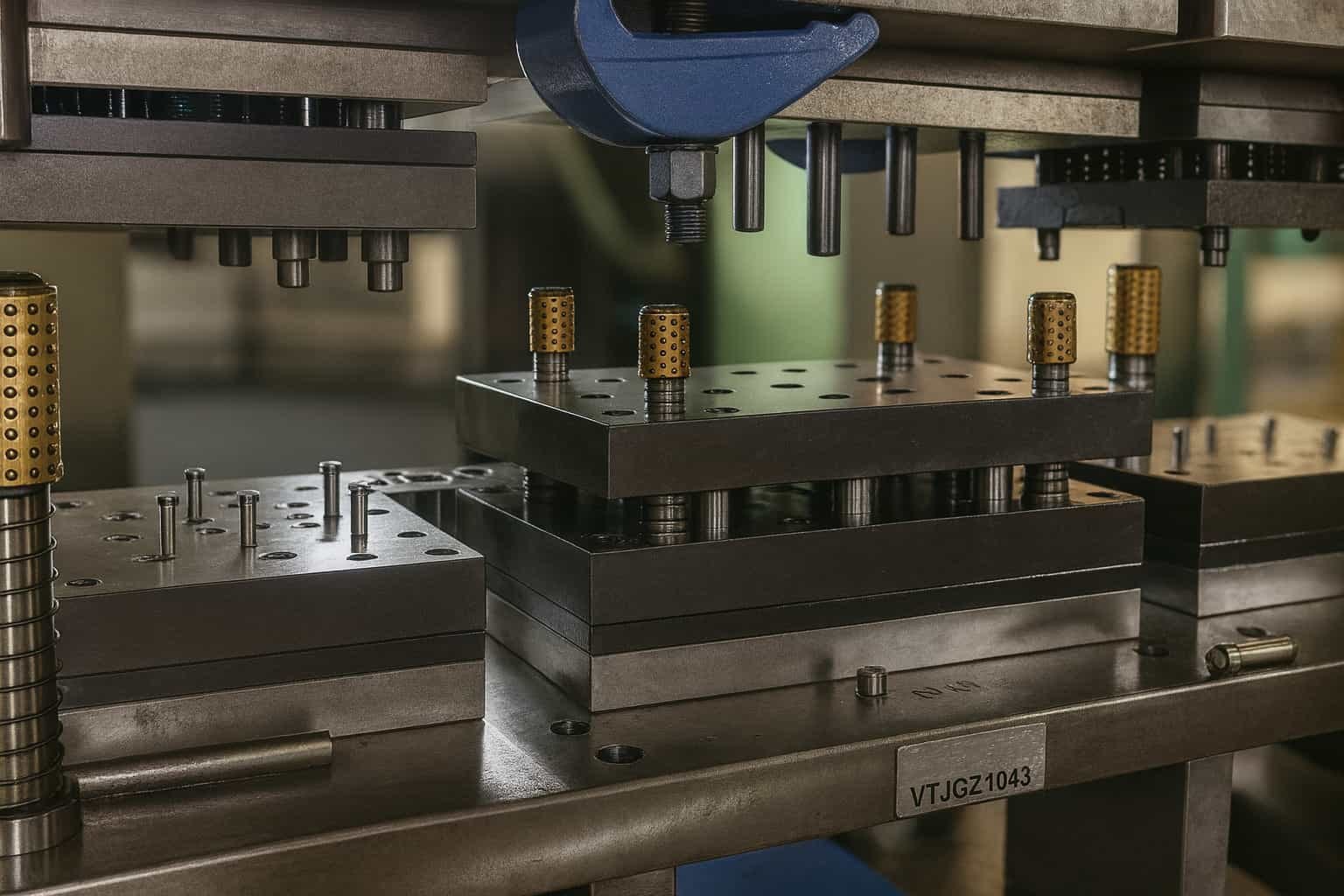
Steps
You might want to know how stamping works. This process uses presses and special tools to shape flat metal sheets. First, you start with a design. At the end, you get a finished part. Here are the main steps in the stamping process:
Design and Die Creation: You use CAD software to design your part. Then, you make a custom die that matches your design. The die shapes the metal.
Material Selection: You pick the right metal sheet for your part. You think about strength and how the part will be used.
Blanking: You cut the metal sheet into smaller pieces called blanks. These blanks have the basic shape of your part.
Forming: You put the blank into a stamping press. The press pushes the blank into the die. This shapes it by bending, stretching, or drawing.
Piercing and Trimming: You remove extra material and make holes or slots. This step gives your part its final shape.
Finishing: You clean, polish, or coat the part. This makes it look better and work well. Sometimes, you also smooth sharp edges.
Quality Control: You check each part to make sure it is correct. You use sensors and measuring tools to find problems early.
Tip: Quality control is very important in metal stamping. Real-time sensors and digital tools help you spot defects fast. This stops bad parts from being shipped and keeps customers happy.
Stamping presses use a lot of force. You need to be careful at every step to match your design. Many companies use cold-forming, which shapes metal without heat. Cold-forming saves energy and keeps the metal strong. But you must watch for springback and small shape changes.
Operations (Bending, Cutting, Punching)
You use different operations in metal stamping to shape and cut metal. Each operation has a special job and uses different tools. Here is a table to show how these operations compare:
Operation Aspect | Stamping (Bending, Cutting, Flanging, Coining, Blanking) | Punching |
|---|---|---|
Material Removal | Often reshapes metal without removing material (e.g., bending) | Removes material to create holes or cutouts |
Complexity | Can involve multi-step, complex tooling and processes | Generally a single-step, simpler process |
Design Freedom | Allows complex 3D shapes and multi-feature designs | Limited to holes and simple shapes in flat sheets |
Material Waste | Lower waste due to reshaping rather than cutting | Higher waste due to slug removal |
Precision & Tolerances | High precision for complex shapes | High precision for hole placement |
Production Speed | More time-consuming due to multiple steps and tooling changes | Faster single-step operation |
Let’s look at the most common operations in stamping:
Bending: You change the shape of metal without cutting it. Bending lets you make angles, curves, and folds. This is important in sheet metal forming.
Cutting: You use a die to cut the metal into the shape you want. Cutting includes blanking, where you cut out the main part, and trimming, where you remove extra edges.
Punching: You use a punch and die to make holes or slots. Punching removes small pieces called slugs.
Flanging: You bend the edge of the metal to make a rim or lip. Flanging adds strength and helps parts fit together.
Coining: You press the metal with high force to make fine details or sharp edges. Coining makes the surface look better and more accurate.
Embossing: You raise or sink parts of the metal to make patterns or textures.
You often use cold-forming in metal stamping. Cold-forming shapes metal at room temperature. This keeps the metal strong and saves energy. It also gives you a smooth surface and good accuracy. You need to use the right amount of force in the press. Too much force can crack the metal. Too little force can leave the part unfinished. Lubrication helps reduce friction and keeps the surface smooth.
You may have problems like tool wear, springback, or cracks in the metal. You can fix these by picking the right material and keeping your tools in good shape. Sensors help you watch the process. Advanced presses and real-time checks help you make good parts every time.
Note: Cold-forming works best for simple shapes and high production rates. For very complex parts or strong metals, you might need hot stamping or multi-stage forming.
The stamping process is a fast, accurate, and low-cost way to make metal parts. You can trust stamping presses and the right press machine to make parts you need, from car panels to tiny electronic connectors.
What Are the Different Types of Stamping?
When you learn about metal stamping, you find a few main types. Each type is good for different jobs, amounts, and part shapes. Let’s see the most common types used in factories.
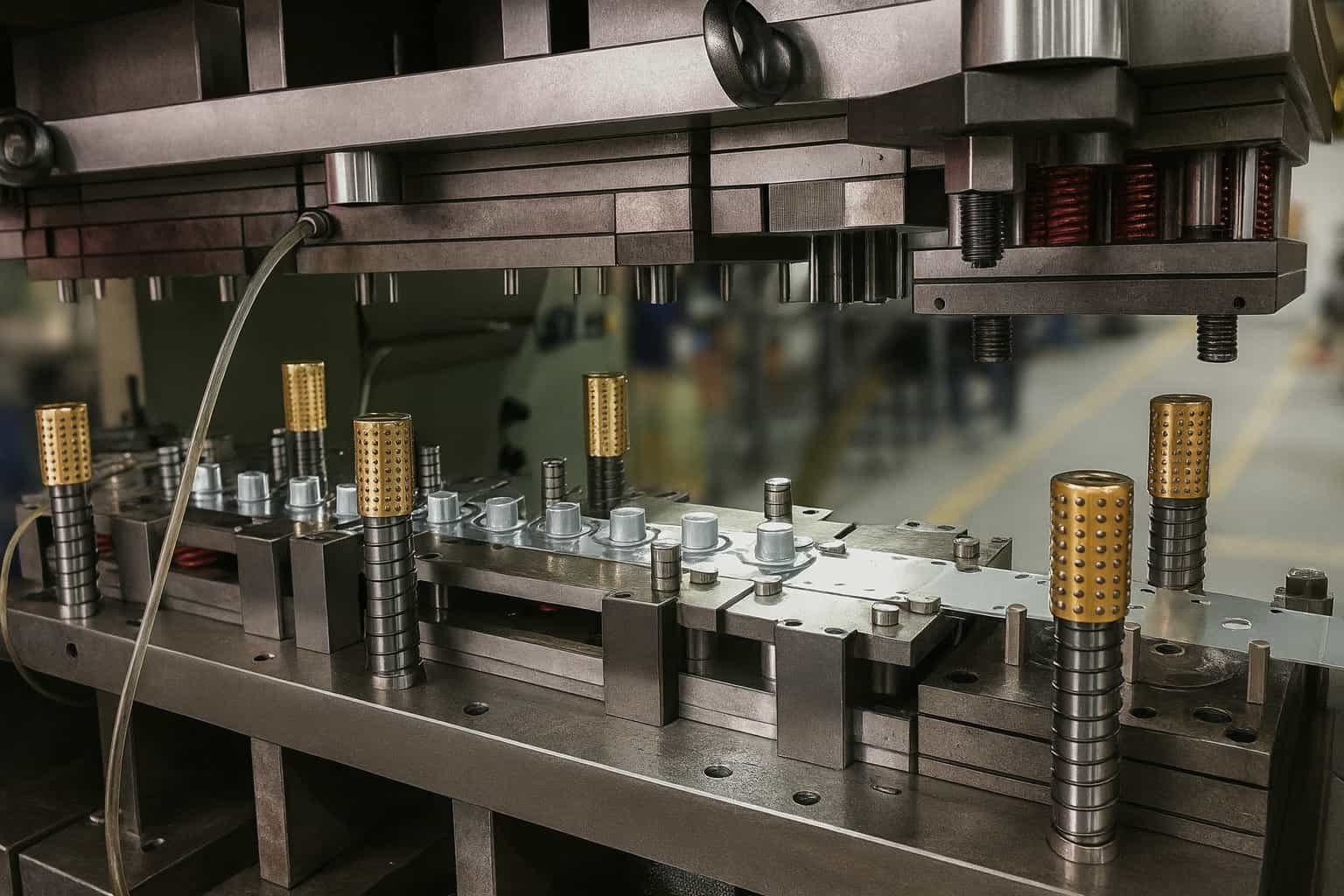
Progressive
Progressive stamping is fast and saves time. You move a strip of metal through many dies. Each die does a different job, like bending or punching. Every time the press goes down, you get a finished part. This way is best for making lots of parts and tricky shapes. You see progressive stamping in cars, planes, electronics, and medical tools.
Progressive stamping puts many steps into one machine process.
You get parts that are the same and very exact.
You can use steel, aluminum, copper, or brass.
Plating and coating help stop rust and improve how parts work.
If you need many parts that look the same, progressive metal stamping is a great pick.
Deep Draw
Deep draw stamping makes deep, hollow parts. You pull the metal into a die to make things like cans or battery cases. This way uses many steps to keep the walls even and strong.
Feature | Deep Draw Stamping | Conventional Metal Stamping |
|---|---|---|
Process Steps | Usually just one step | |
Part Strength | Strong, because metal is stretched | Not as strong, metal not stretched |
Part Complexity | Can make hard shapes with tight limits | Easier shapes |
Best Use | Good for lots of strong, air- or watertight parts | Good for small jobs, less important parts |
You use deep draw stamping for parts that must be strong and shaped just right, like in medicine or airplanes.
Fourslide
Fourslide stamping lets you make more shapes. Four tools slide in to bend and shape metal from different sides. You can make bends over 90 degrees. Fourslide is good for small, detailed parts and medium amounts.
Fourslide stamping uses just the metal you need, so less waste.
You can switch tools quickly, so you do not wait long.
If your project needs tricky bends or changes often, fourslide is a smart choice.
Short Run
Short run stamping is best for samples or small groups of parts. You use simple, cheap tools that you can change fast. This way helps you try new ideas before making lots of parts.
Short run stamping is good for 1 to 100,000 pieces.
You can make hard designs and not spend too much.
It works well for custom parts and quick changes.
You pick short run metal stamping when you want to try new things, get parts fast, and save money on new designs.
How Is Sheet Metal Stamping Used in Manufacturing?
Sheet metal stamping is a critical process in manufacturing, used to shape, cut, and form metal sheets into precise components. It enables mass production of consistent, high-quality parts for industries such as automotive, aerospace, and appliances.
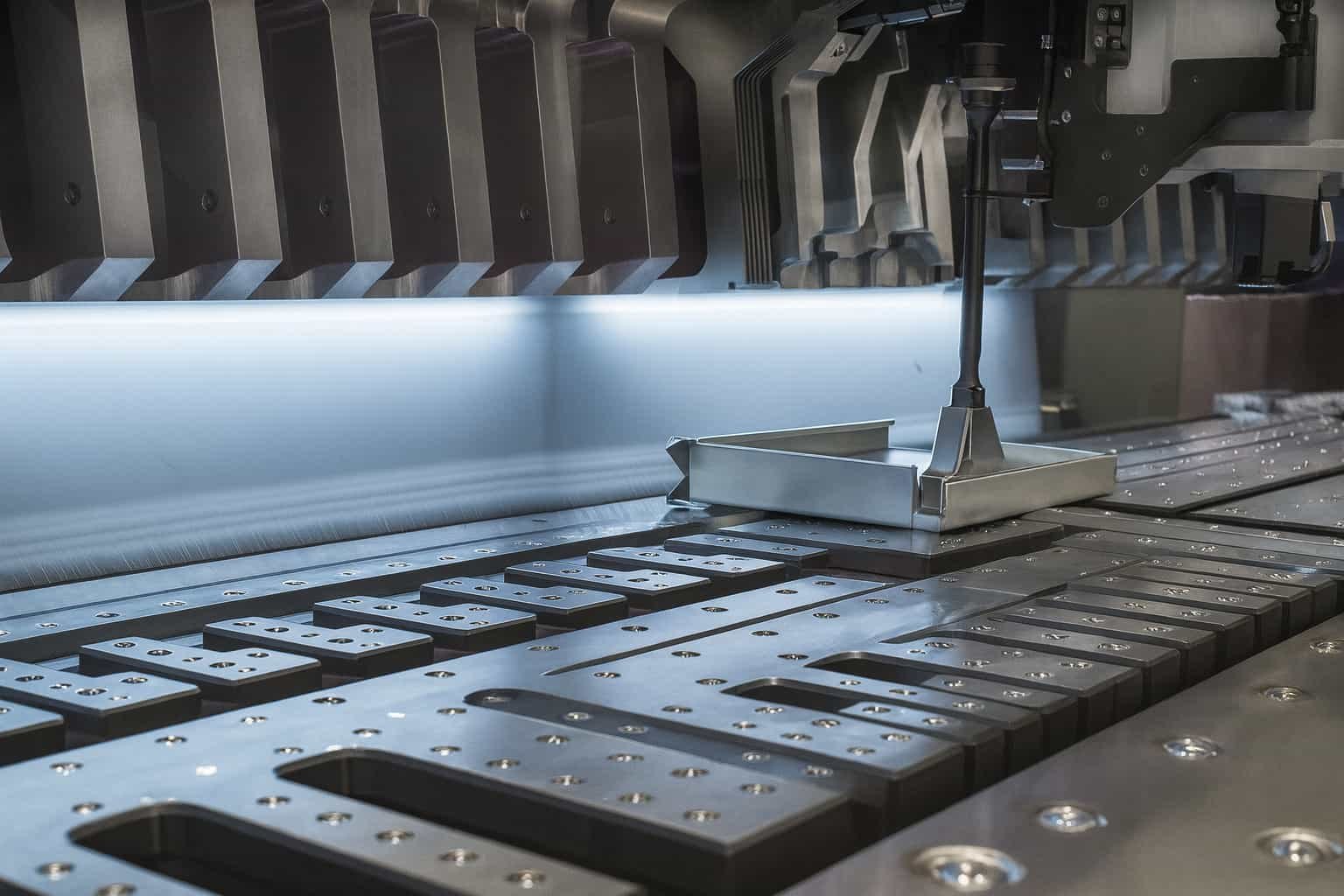
Equipment
You need special machines for metal stamping. The main machines are presses and dies. A stamping press pushes metal into a shape. Different presses work for different jobs. A C-frame press is good for simple parts or small batches. High-speed straight-sided presses make many small parts fast. Open back inclinable presses are used for blanking and shallow shapes. Eccentric geared presses help make deep-drawn parts.
You also pick the right drive for your press. Flywheel-driven mechanical presses are common and fit many jobs. Hydraulic presses give full force and let you change speed. Electronic servo-driven presses give the best control and accuracy. These are good for custom shapes and tricky parts.
Dies are tools that cut and shape the metal. You can use compound dies, combination dies, or progressive dies. Each die fits a different job or design. Tooling uses strong tool steel or carbide. This helps tools last longer and keeps parts correct.
Tip: Good design and the right machines help you avoid mistakes and keep stamping easy.
Materials
You can pick from many materials for sheet metal stamping. Each material has special features for your design. Steel alloys are strong and not too expensive. High-strength low-alloy steels are tougher and easier to weld. Advanced high-strength steels are good for car and electronic parts that hold weight.
Aluminum alloys are light, do not rust, and can be shaped easily. You see them in cars, planes, and buildings. Some metals like titanium, nickel alloys, and magnesium have special uses. Titanium is light and does not rust. Nickel alloys work in tough places. Magnesium is light and helps make cars weigh less.
Here is a table to compare common stamping materials:
Material | Key Properties and Benefits | Typical Applications |
|---|---|---|
Aluminum | Light, does not rust, easy to shape | Cars, planes, buildings |
Stainless Steel | Strong, does not stain or rust, lasts long | Medical, food, boats, appliances |
Carbon Steel | Strong, cheap, easy to join | Buildings, cars |
Copper & Brass | Good for electricity, easy to shape, does not rust | Electronics, heating and cooling |
HSLA Steel | Strong, easy to weld, does not rust | Cars, big machines |
You choose your material based on your design and project needs. The right machines and materials help you make strong and exact parts every time.
What Are the Advantages and Disadvantages?
The advantages of a particular choice or technology often include increased efficiency, cost savings, and enhanced user experience. Conversely, disadvantages may encompass high initial costs, potential security risks, and a steep learning curve.
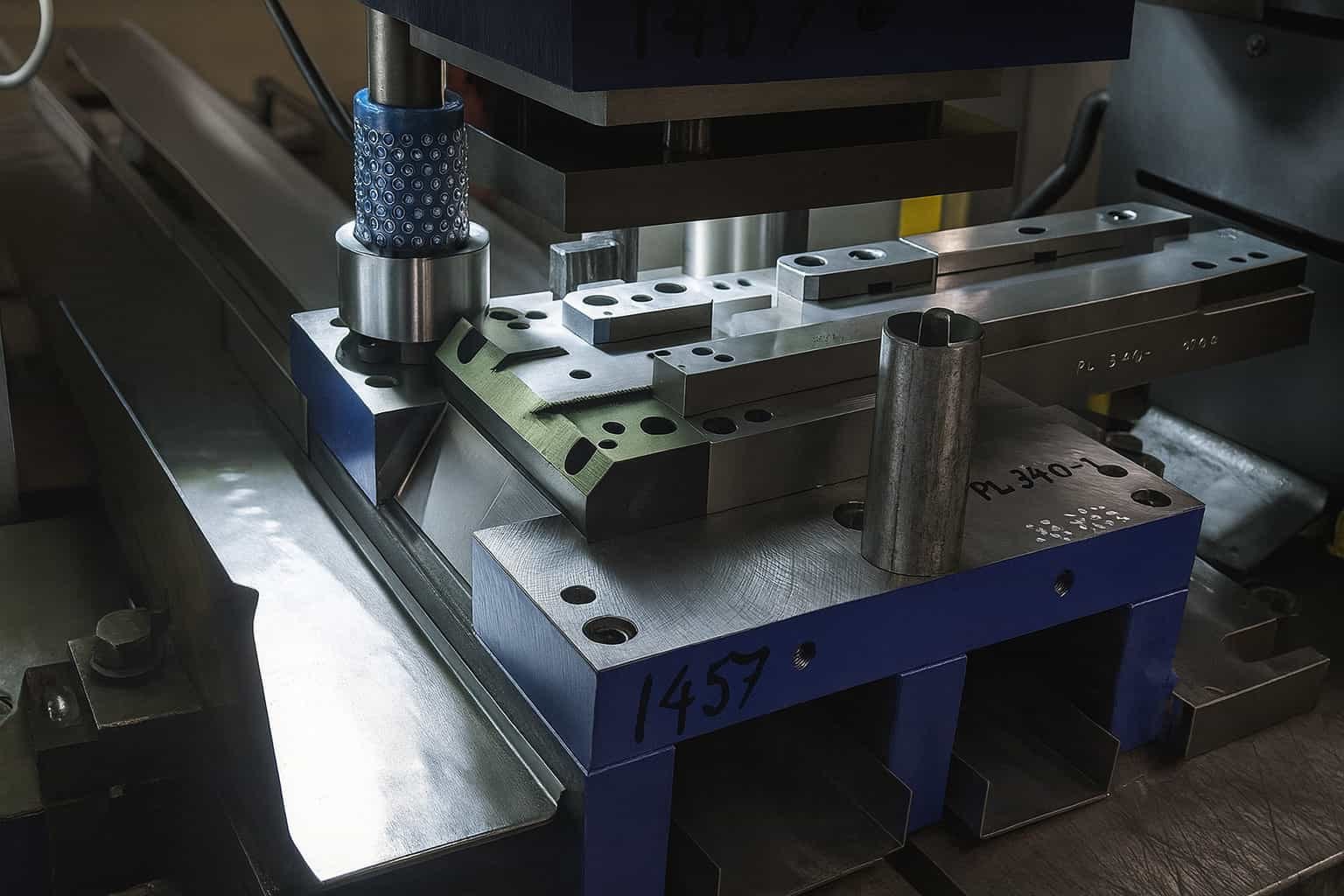
Advantages
Stamping gives you many good things in manufacturing. You can make lots of parts very fast. The parts are made with high accuracy. Stamping lets you create tricky shapes that always look the same. This helps car, plane, and electronics companies. They need strong and detailed parts.
Stamping also saves you money when you make many parts. You use less metal, so you do not waste much. Stamping is quick, and the machines can work for a long time. Every part comes out the same, so you meet tough quality rules.
Tip: Stamping is smart if you need many strong, detailed, and cheap parts.
Here is a table to show the main advantages:
Advantage | What It Means for You |
|---|---|
High Precision | You get accurate and detailed parts |
Fast Production | You make many parts in a short time |
Cost-Effective | You save money on large production runs |
Consistent Quality | Every part looks and works the same |
Less Material Waste | You use only what you need, saving resources |
Disadvantages
Stamping has some problems you should know about. These can make your project harder, especially if you need only a few parts or want to change your design.
Tooling costs are high, so small jobs cost more.
You cannot change the design easily after making the die.
Stamping works best with thin metals like steel, aluminum, or copper.
Machines and tools need care and fixing, which takes time and money.
You might see problems like burrs, cracks, or scratches on parts.
Very thick metal or hard shapes are tough to stamp.
Note: If you only need a few parts or want to change your design a lot, stamping might not be the best way.
What Are the Applications?
Stamping shapes many industries. You see its impact in cars, electronics, and aerospace. Each field uses stamping to meet strict needs for quality, speed, and cost. You can use stamping to turn your design ideas into real products that work well and last long.
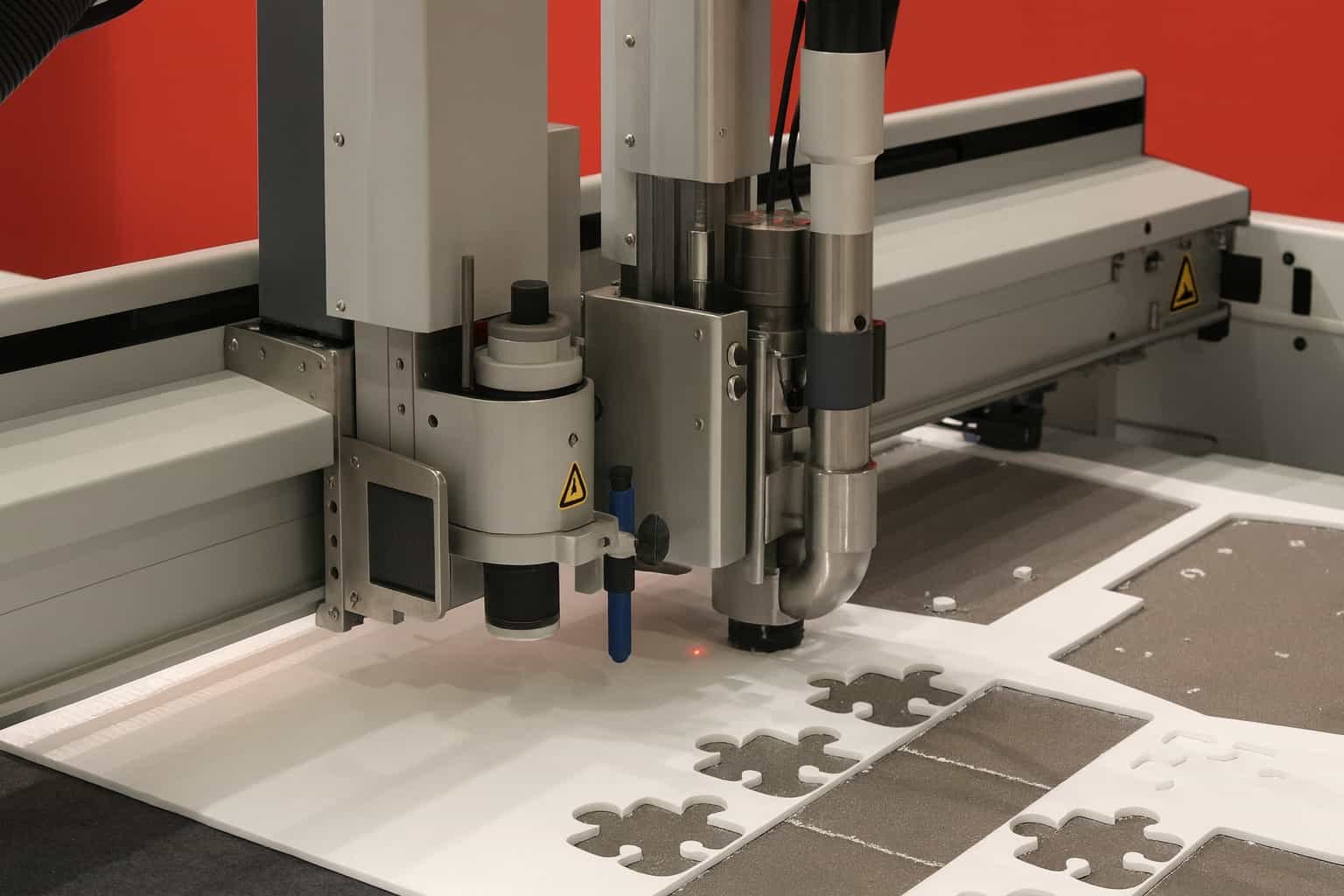
Automotive
You find metal stamping everywhere in the automotive world. This process helps you make parts like fenders and hub caps. These parts need to match exact sizes and shapes. Stamping lets you meet tight rules for fit and strength. You can trust stamping to give you the same part every time, which is key for safety and looks. When you work on a new car design, you rely on stamping to create body panels, brackets, and even small clips. This method supports both large and small runs, so you can test new ideas or make millions of parts.
Stamping helps you keep costs low and quality high in every car you build.
Electronics
You use stamping to make many electronic parts. This process supports your design for items like connectors, housings, and shields. You can choose from metals such as stainless steel, copper, or aluminum to match your needs. Stamping gives you:
Fast production for both samples and big orders
Consistent quality with less waste
Flexibility to use many metals and shapes
You see stamped parts in cell phones, computers, TVs, and medical devices. If your design needs a special enclosure or a heat sink, stamping can help you get it right. You also meet strict rules for cleanliness and performance, which is important in electronics.
Aerospace
You depend on stamping for safe and strong aerospace parts. This process lets you create parts for flight control, engines, and fuel systems. You can use metals like titanium and aluminum to keep things light but tough. Stamping meets high standards for quality and safety, such as SAE Aerospace Standards. You get parts like:
Component Type | Example Parts |
|---|---|
Flight Controls | Rudders, stabilizers, flaps |
Engine & Fuel Systems | Sensors, valves, tanks |
Instruments | Compasses, altimeters, pressure sensors |
Hardware | Screws, bolts, pins, fasteners |
You use stamping to match tight tolerances and complex design needs. This helps you build planes and spacecraft that are safe, reliable, and efficient.
Stamping lets you make parts that are exact and dependable. It is fast and does not cost as much as other ways. Many industries use stamping, like cars, planes, and electronics.
You get parts that are very accurate and waste less material.
Stamping helps you make lots of parts that fit well.
You can pick from different methods to match your project.
If you have a new project, think about using stamping. It can help you reach your goals for good quality, quick work, and saving money.
FAQ
What materials can you use for stamping?
You can use many metals for stamping. Common choices include steel, aluminum, copper, and brass. Some projects use stainless steel or titanium. You pick the material based on strength, weight, and how the part will be used.
How do you choose the right stamping process?
You look at your part’s shape, size, and how many you need. Progressive stamping works well for large runs. Fourslide fits complex bends. Deep draw helps with deep, hollow shapes. Short run stamping is best for small batches or prototypes.
Can you use stamping for custom parts?
Yes, you can use stamping for custom parts. You design special dies for your project. This lets you make unique shapes and sizes. Short run stamping helps you test new ideas before making many parts.
What problems can happen during stamping?
You might see cracks, burrs, or scratches on parts. Tools can wear out or break. Sometimes, the metal springs back after bending. You can fix these problems by using good materials, keeping tools sharp, and checking quality often.
Is stamping safe for workers?
Stamping can be safe if you follow safety rules. You should use guards on machines and wear safety gear. Training helps you avoid accidents. Many factories use sensors and automation to keep workers safe.

